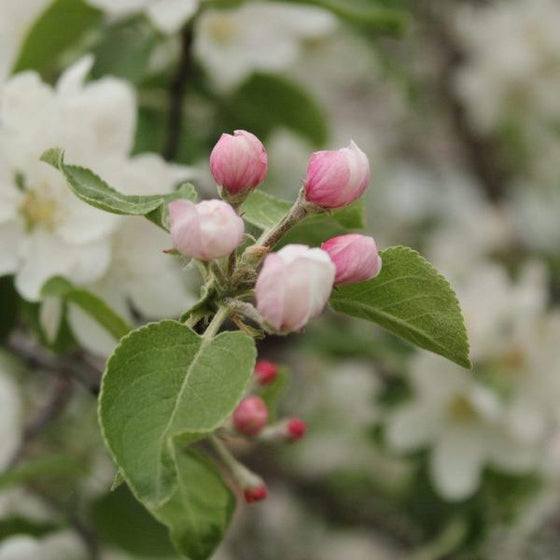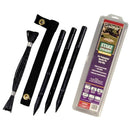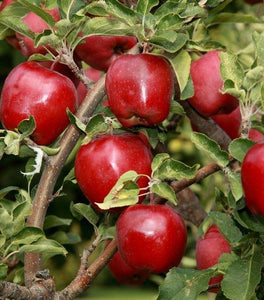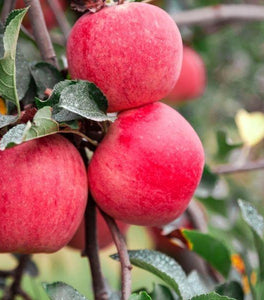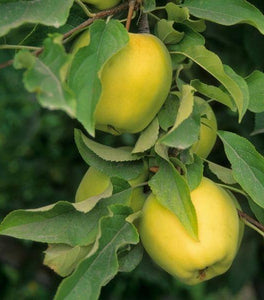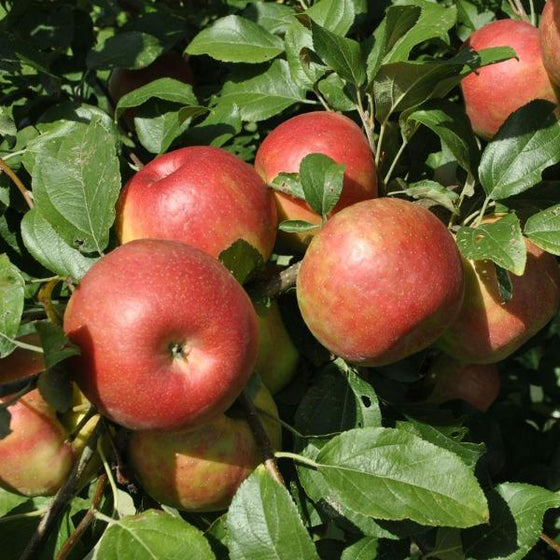
Images Depict Mature Plants
Honeycrisp Apple Trees for Sale Online
Honeycrisp Apple Trees are a modern apple that is in high demand. Outstanding fresh-eating qualities make Honeycrisp apples an American favorite. The fruit is sweet as honey, very aromatic, and have an explosively juicy, crisp texture.
These Apple Trees grow to about 8 to 10 feet tall. Pinkish white flowers appear in April and later, large red apples with cream-colored flesh mature in mid-September. Great apple for storing.
Honeycrisp Apple Trees are not self-pollinating so you will need to have two trees planted within 50 feet of one another for apple production. It is not necessary for the second tree to be a Honeycrisp, any apple variety will do.
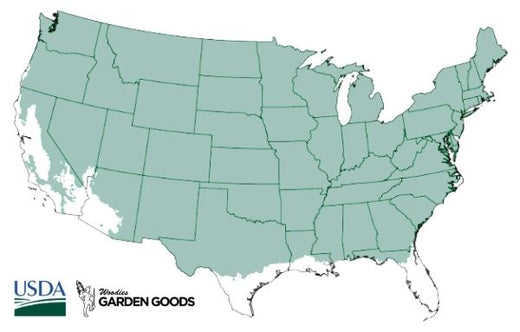
| Hardiness Zone: | 3-8 |
|---|---|
| Mature Height: | 12 to 15 Feet |
| Mature Width: | 12 to 15 Feet |
| Classification: | Broad leaved deciduous tree, spring flowering |
| Sunlight: | Full sun |
| Habit: | Spreading, umbrella shaped canopy |
| Foliage: | Dark green |
| Fruit Color: | Red |
| Pruning Season: | Late winter |
| Soil Condition: | Any well drained soil |
| Water Requirement: | Water well until established |
| Uses: | One of the best apples for eating fresh or storing |
How to Care for Honeycrisp Apple Tree
Before you buy a Honeycrisp Apple Tree, make sure to read about the recommended care instructions to keep this plant healthy and thriving.
How do I plant a Honeycrisp Apple tree?
We suggest when planting your newly purchased Honeycrisp Apple Tree that you dig a hole twice as wide as the root system but not deeper. Depending on the quality of your existing soil you may need to add a locally sourced compost or topsoil to the back-fill soil. We do not recommend using straight topsoil or compost as a back-fill soil because more times than not these products will retain entirely to much moisture and will cause the root system to rot. Adding compost or topsoil will help the young feeder roots of Honeycrisp Apple Tree to spread through the loose, nutrient rich soil, much easier than if you used solely the existing soil which more times than not will be hard and compacted. The most common cause of plant death after transplanting is planting the new plant to deep. That is why we do not recommend planting in a hole any deeper than the soil line of the plant in the pot. A good rule is that you should still be able to see the soil the plant was grown in after back-filling the hole.
How often do I water Honeycrisp Apple Trees?
After back filling and lightly compacting the 50/50 mix of existing soil and compost give the Honeycrisp Apple Tree a good deep watering. This is not to be rushed. Most of the water you put on the plant at first will run away from the plant until the soil is soaked. A general rule of thumb is to count to 5 for every one gallon of pot size. For example a one gallon pot would be watered until you count to 5 a three gallon pot would be 15 and so on. Check the plant daily for the first week or so and then every other day there after. Water using the counting method for the first few weeks. Gator Bags are a good investment that will help minimize the watering chore.
How much Fertilizer does an apple tree require?
Trees such as Honeycrisp Apple Tree grow best if they are fertilized lightly in the spring once frost has passed with a well-balanced, extended-release, fertilizer such as Espoma Tree-tone. Fertilize Honeycrisp Apple Tree again 6 to 8 weeks later to encourage a heavier fruit set or faster growth of young trees. We recommend Bio-Tone fertilizer when planting. Proper fertilization of your Honeycrisp Apple Tree will lead to healthier and more disease resistant plants, as well as provide you with many more enjoyable fruits. Always, read the label on your fertilizer bag, and follow the instructions.


